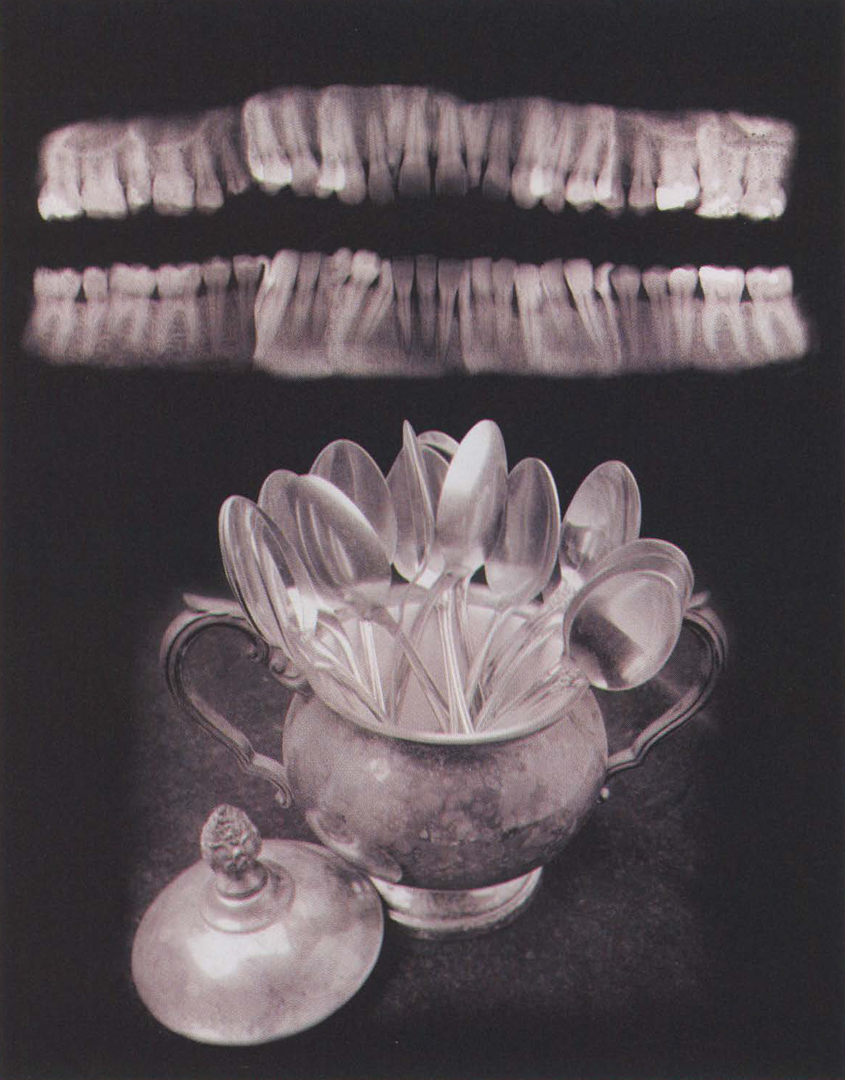Marilyn Waligore: Sugar Jar
Artist(s):
Title:
- Sugar Jar
Exhibition:
Creation Year:
- 2005
Medium:
- Gelatin silver print
Size:
- 16 inches x 22 inches
Category:
Artist Statement:
Using digital processes, I re-present objects associated with the domestic sphere in the context of the electronic age. My images combine tools and personal objects that are found in the home, and in some cases belong in a laboratory. With the aid of digital technology, I aim to remove the hierarchical distinctions associated with higher and lower forms of technology. I attempt to muddy the separation between women’s work, especially menial labor, and the rest of cultural achievement. Menial, unseen, uncompensated work is often central to daily life, and is performed in the home (cleaning, cooking, and care-giving). By extension, there is a culture connected to women’s activities that is also denied importance. The history of the witch, including tales of subversions of domestic activity, has provided a point of departure. The myths of the witch parallel those of Dedaelus and Icarus, through references to science, magic, immortality, and defiance of the laws of nature. I am drawn to stories of attempts to overcome human physical limitations. With the advent of the laboratory research of the 21st century, controversies of our time often circle around decisions over sustaining or terminating human life, which encourage reflection on myths of immortality.
Still life often references the messiness of our humanity, through a documentation of domestic activities such as eating and drinking what Norman Bryson calls “the small-scale, trivial, forgettable acts of bodily survival and self maintenance.”1 The rendering of intimate close spaces reinforces this connection back to the physical presence of the viewer, placing the body at the center. Still life has the potential to acknowledge the anonymity of daily life while also providing a vehicle for the allegories generated by the vanitas, a tradition approach to still life that references human mortality and rejection of worldly possessions. The products of a diverse range of our collective activities can now be stored as digital code. Simultaneously, we acknowledge the cultural aspects of physical labor and personal ritual. At times, we may express a longing for abandoned rituals practiced in the recent past. Embedded in my working methods lies my ambivalence about shifting technologies as I exchange one set of processes for another. intimate images hold the viewer close and encourage reflection :r commonplace rituals. We rarely question our selection of the daily electronic tasks we now embrace or consider those manual processes we have discarded.2005





